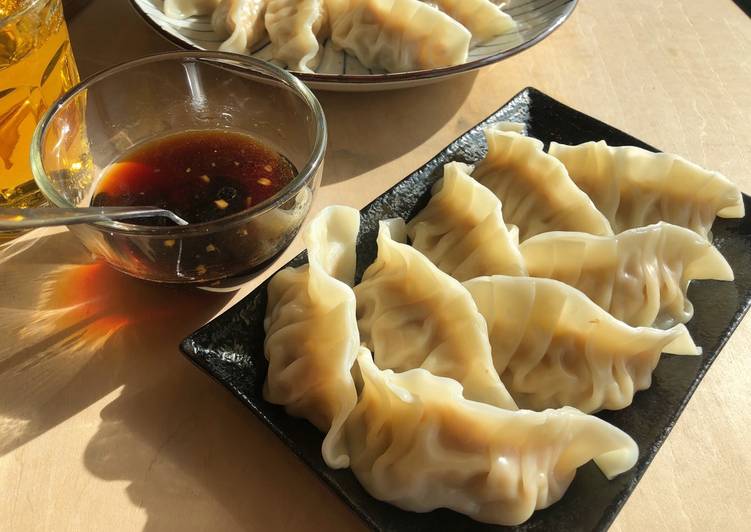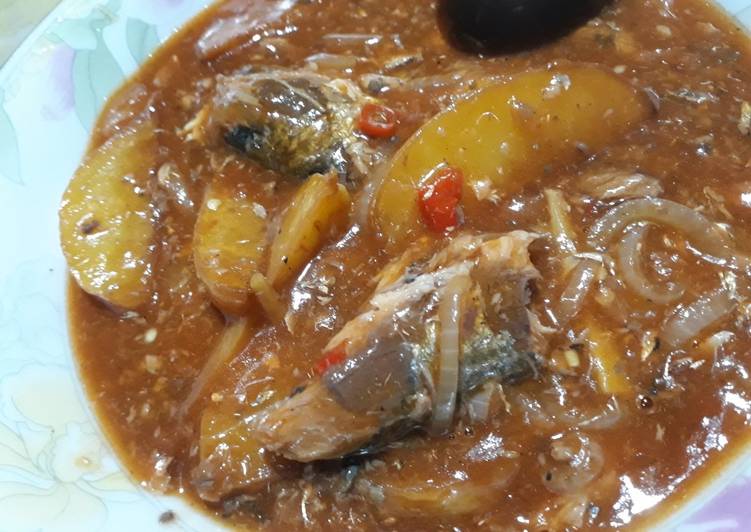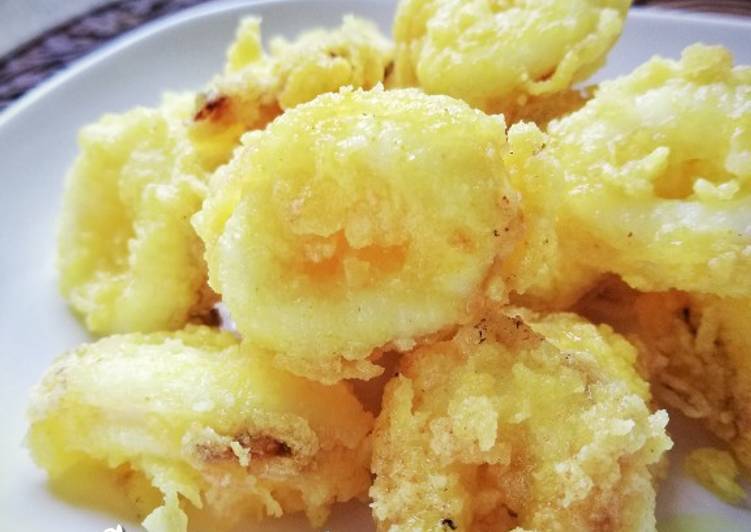
Hai semua, harap anda mengalami hari yang luar biasa hari ini. Hari ini, Saya akan menunjukkan kepada anda bagaimana untuk membuat hidangan yang khas, chinese new year dumplings (jiaozi). Salah satu kegemaran saya . Untuk saya, saya akan menjadikannya agak sedikit unik. Ini akan sangat harum dan kelihatan enak.
Chinese New Year Dumplings (Jiaozi) adalah salah satu yang paling popular daripada makanan terkini di bumi. Ia dinikmati oleh berjuta-juta orang setiap hari. Ini Praktis, itu cepat, rasanya sedap. Mereka baik dan kelihatan menggugah selera. Chinese New Year Dumplings (Jiaozi) adalah sesuatu yang saya telah sayangi di keseluruhan hidup saya.
Jiaozi (Chinese: 餃子; [tɕjàu.tsɨ] (listen)) are a kind of Chinese dumpling, commonly eaten in China and other parts of East Asia. They are one of the major dishes eaten during the Chinese New Year. As China ushers in the Year of the Goat, chef Jason Li shows how to make a traditional new year Jiaozi dumpling Get the latest headlines.
Untuk memulai dengan resipi ini, kita harus pertama menyediakan beberapa ramuan. Anda boleh masak chinese new year dumplings (jiaozi) menggunakan 16 bahan dan 7 langkah. Inilah cara anda memasak ini.
Bahan-bahan yang diperlukan untuk membuat Chinese New Year Dumplings (Jiaozi):
- Beli 20 sheets Chinese dumpling skins(ready-made)
- Ambil <Ingredients for dumpling filling>
- Siapkan 200 g Chicken minced meat
- Sediakan 1/2 Onion
- Ambil 1 table spoon Sesame oil
- Ambil 1 table spoon Chopped garlic
- Ambil 1 table spoon Chopped ginger
- Siapkan Salt and pepper
- Beli 1 table spoon Soy sauce
- Ambil <Dipping sauce>
- Siapkan 4 table spoon Soy sauce
- Sediakan 2 table spoon Vinegar
- Beli 1/2 table spoon Sesame oil
- Siapkan 1 tea spoon Sugar
- Ambil 1 tea spoon Grained ginger
- Sediakan 1 tea spoon Grained garlic
Jiaozi (餃子) or dumpling is perhaps the most special food in people's life Dumplings therefore is shaped like gold ingots, which symbolize wealth. Putting coins in dumplings are not popular anymore, perhaps for safety reason. In Chinese homes, dumplings (or jiaozi in Mandarin) are a traditional must-eat food on New Year's Eve; families wrap them up and eat them as the clock strikes midnight. Dumplings symbolize longevity and wealth; their shape resembles gold shoe-shaped ingots, an early form of Chinese currency.
Arahan untuk membuat Chinese New Year Dumplings (Jiaozi):
- Chop onion in small pieces.
- Chop ginger and onion in small pieces and place them in a bowl.
- Add minced chicken, ingredients for dumpling filling and mix well by hand until it gets sticky.
- Place a small portion of the filling on a dumpling skin and wet the edges of the dumpling with water.
- Fold the dough over the filling into a half moon shape and pinch the edges to seal(see below). Have 6 pinches in total for 1 dumpling(this is my style).
- Bring a large pot of water to a boil. Add 1 tea spoon of sesame oil to the pot. Once it boils, add half the dumplings and wait for them to float. Wait for another 3 minutes then it's ready to drain and remove from the pot.
 1. Mix all the ingredients for the dipping sauce. Serve and enjoy!!
1. Mix all the ingredients for the dipping sauce. Serve and enjoy!!
An Important Chinese New Year Food. Dumplings are a traditional Spring Festival food in northern China, but not in the south. On the eve of the Spring Festival, dumplings have an irreplaceable place in many New Year's Eve banquets, though some areas choose to eat dumplings after New. Chinese Dumplings, called Jiaozi in China, are a traditional Chinese food. They are essential on New Year's Eve in Spring Festival in Northern China.
Jadi yang akan dilakukan untuk menyiapkan masakan di atas menggunakan resipi istimewa makanan chinese new year dumplings (jiaozi) ini. Terima kasih banyak untuk waktu anda. Saya yakin bahawa anda dapat membuat ini di rumah. disini akan ada lagi resipi makanan menarik in rumah yang akan datang Ingat untuk bookmark halaman ini di browser anda, dan bagikan kepada keluarga, rakan sekerja dan rakan anda. Terima kasih sekali lagi kerana membaca. Teruskan memasak!


